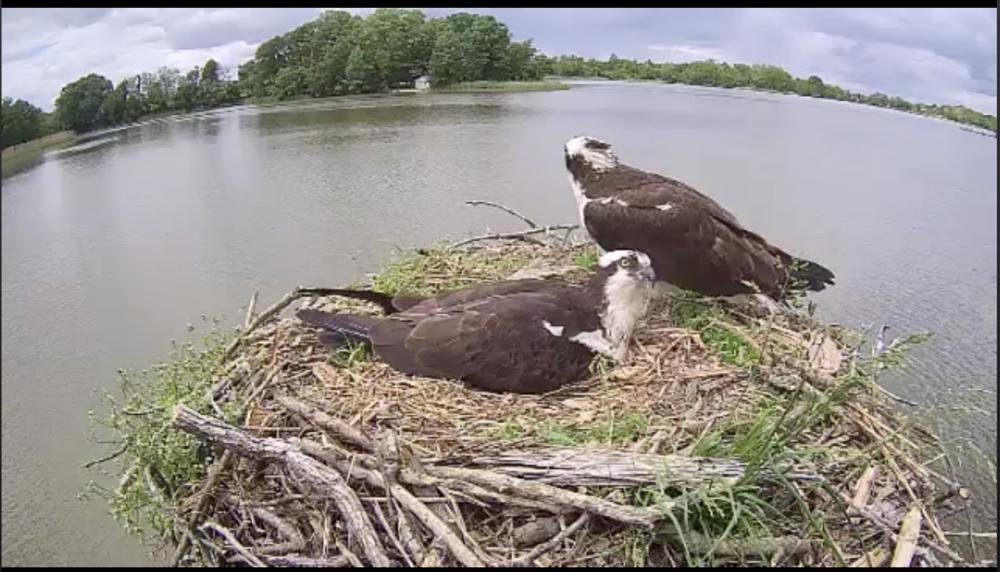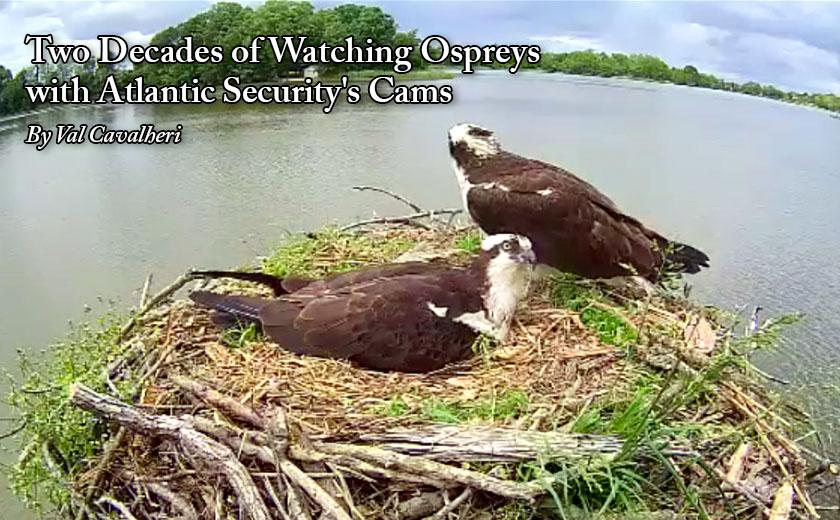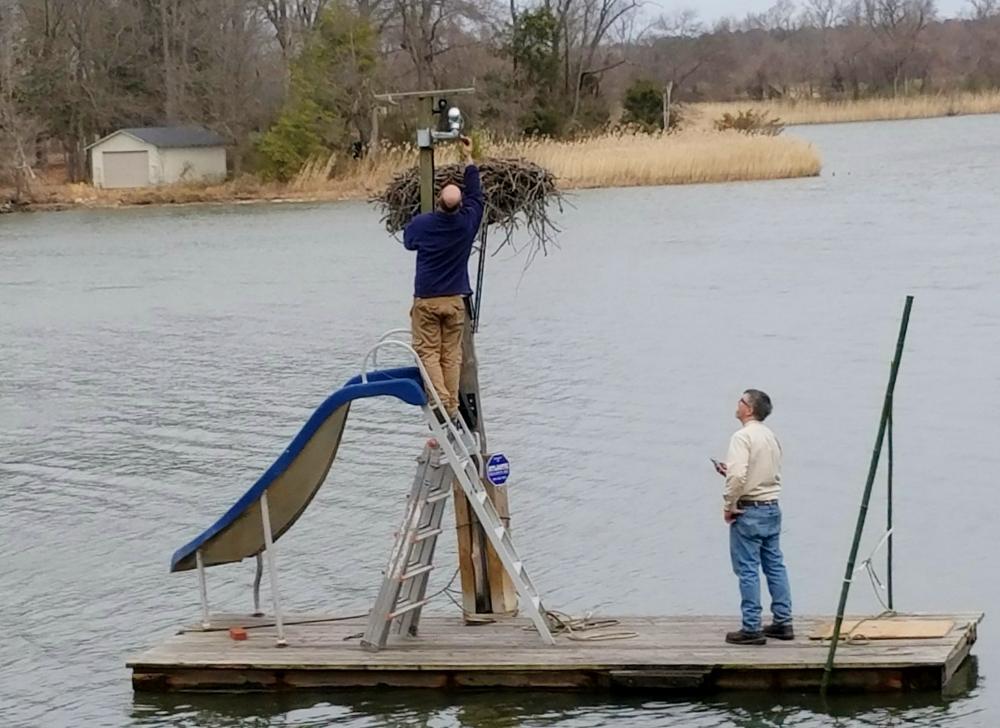A true harbinger of spring at the Eastern Shore is the return of the ospreys to their elevated nests, usually around St. Patrick’s Day. If you live or pass by any of the local waterways, just about now you may see the top of the head of one of the parents sitting on their eggs. But unmistakably, the best view can be found on your computer, tablet, or phone anytime day or night on the Ospreycam Live feed, set up and hosted by the Chestertown-based Atlantic Security Inc. (ASI).
Started in 1996 by ASI’s founder, John Wayne, the first camera was mounted on a tree, aimed at the nest, and displayed on a kitchen television monitor in black and white for his family. Today, the feed which has kept up with the growing camera system technology, delivers HD quality images, night vision, AND sound from a state-of-the-art camera, according to ASI’s marketing manager, Jennifer Wayne. It is mounted on a pole aiming down at the nest and available to anyone interested in the comings and goings of the pair and (within the next couple of weeks) their babies.
 Although ospreys mate for life and return to the same nest year after year, Wayne says she’s not 100% sure this year’s couple is the same as from previous years. What she is sure of is that there is a lot to see starting from when they begin building the nest through when they migrate south for the winter. Until then, the live feed will allow visitors to see life not only inside the nest but also the surrounding area.
Although ospreys mate for life and return to the same nest year after year, Wayne says she’s not 100% sure this year’s couple is the same as from previous years. What she is sure of is that there is a lot to see starting from when they begin building the nest through when they migrate south for the winter. Until then, the live feed will allow visitors to see life not only inside the nest but also the surrounding area.
Expect to see and hear the unmistakable squawking of one or both parents as they take turns rotating and sitting on the eggs, keeping the nest clean, and warding off predators. Once the chicks hatch, the parents will fish and feed their new family. There may be glimpses of an osprey diving feet-first to capture a meal, repositioning the fish, so its head faces forward, making it easier for the osprey to fly.
Even after 23 years in the Osprey Cam business, the Wayne family can still be surprised by new observations. One of which has been the disappearing egg. An osprey usually lays two to three eggs, but many times only two eggs hatch and the third disappears. Perhaps it’s accidentally removed, maybe it speaks to the viability of the egg which the parent buries or discards. (Note that there are currently three eggs in the nest.)
Another event which Wayne described happened last year during the hottest summer days when adult ospreys were seen skimming the water, as if fishing, coming up empty and returning to the nest. They learned that this was how the parents brought water to the chicks.
As much as the video cam is a great educational tool, visitors are also warned that this is a live feed of a nature event and sometimes unexpected and upsetting things can happen. Predators such as great-horned owls and bald eagles may attempt a hostile takeover of the nest. A chick may get injured or killed. “These events are difficult to watch,” says Wayne, “even when we feel we need to notify the proper authorities, they usually tell us not to impede. It’s not our job to play God. Not only that it’s illegal to interfere with birds of prey.”
Thankfully, those types of incidents are rare. What can be expected is watching the quick cycle of the chick’s development after they hatch at the end of May. There will be practice lift-offs in the nest and, as one common saying goes, they will ‘learn to fly by the 4th of July.’ By the end of August/early September, once the fledglings become independent, the adults will fly south. Shortly afterward so will the chicks, “It’s always sad to see them leave,” Wayne says. “But we know they’ll be back.”
The bulk of the credit for the Osprey Cam goes to James Bowman and Dan Wagner, says Wayne. “They are our fearless technicians who provide not only technical expertise but also brave cold, windy conditions in the winter months to make any necessary camera changes and adjustments.” And it is all worth it.
Ospreys are not just fascinating birds. They are also a conservation success story. One of the largest birds of prey in North America, ospreys were formerly endangered. Now a significant proportion of their increasing numbers can be found here, on the Eastern Shore. Since 99% of their diet is comprised of fish, this rebound in their population is a positive indicator on the health of the Chesapeake Bay.
Val Cavalheri is a recent transplant to the Eastern Shore, having lived in Northern Virginia for the past 20 years. She’s been a writer, editor and professional photographer for various publications, including the Washington Post.




Deirdre LaMotte says
This is just fabulous!! Thank you for all John and Jenny, and others, are doing to support our feathered friends. I remember my
children every year finding fish bones under an Osprey nest and how it inspired many conversations about these noble birds! Truly,
a major reason living on the Eastern Shore, right?!